Dealing with matted hair can be a frustrating and time-consuming task. Whether it’s caused by neglect, environmental factors, or specific hair types, tangled hair can be a common challenge for many individuals. However, with the right techniques and preventive measures, you can effectively manage and prevent matted hair, allowing for smoother, more manageable locks. In this article, we will explore various ways to detangle tangled hair and provide valuable advice for preventing it in the first place. We will delve into the importance of proper hair care routines, suitable products, and gentle detangling techniques to untangle knots without causing damage or breakage. Additionally, we will discuss preventive measures to maintain tangle-free hair and keep your locks healthy and beautiful. Whether you’re dealing with occasional tangles or persistent knots, understanding how to detangle your hair properly and implementing preventive strategies can make a significant difference in the overall health and appearance of your locks. So, let’s dive in and discover effective ways to detangle matted hair and gain valuable insights on preventing future tangles for a hassle-free hair care routine.
What is matted hair? Matted hair refers to the condition where individual hair strands become entangled and knotted, forming tight clusters that are difficult to separate or comb through. It occurs when the hair strands cling together, creating clumps or mats that can be frustrating to deal with. Matted hair can be caused by various factors, including inadequate hair care practices, such as infrequent combing or brushing, which allows the hair to tangle and knot over time. Additionally, exposure to moisture without proper drying or detangling can contribute to matted hair, as the dampness can cause the strands to stick together. Using inappropriate hair products or leaving hairstyles untouched for extended periods without maintenance can also lead to the formation of mats.While matted hair is more commonly observed in individuals with curly or textured hair due to the natural tendency of their hair strands to intertwine, it can affect individuals with any hair type. It is essential to address matted hair promptly to prevent further complications. If left untreated, the mats can become tighter, leading to increased tangling, breakage, and potential damage to the hair. Untangling matted hair requires patience, gentle techniques, and the use of suitable detangling products or conditioners to soften the knots and facilitate their separation. Regular hair care practices, such as regular brushing or combing, using moisturizing and detangling products, and avoiding excessive manipulation or rough handling of the hair, can help prevent the formation of mats and maintain the overall health and appearance of the hair.
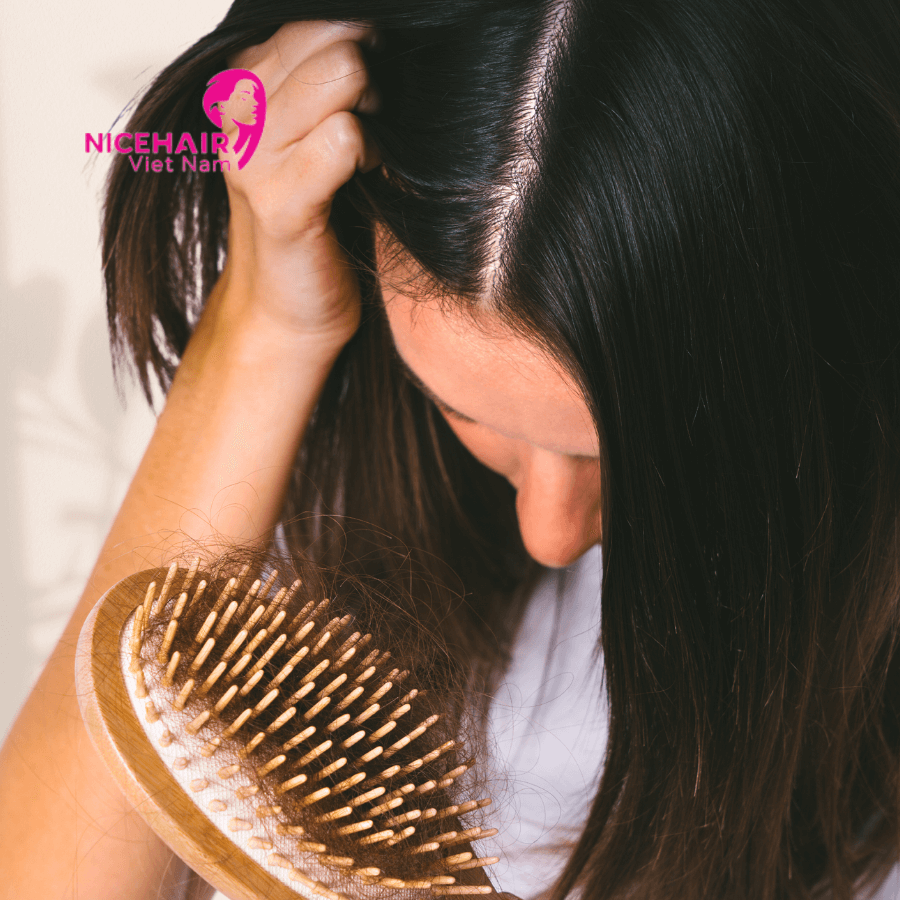
How can matted hair extensions be described?
Matted hair extensions can be visually recognized by their tangled and knotted state, presenting a range of characteristics that differ from well-maintained extensions. The individual hair strands tend to clump together, forming intricate knots and tangles that are challenging to separate or brush through. As a result, the hair extensions lose their natural luster and smoothness, appearing dull, frizzy, and lacking manageability. Sections of the hair may stick together, creating visible clumps or lumps that disrupt the overall look and style. In more severe cases, the hair extensions can become twisted and intertwined, resulting in an uneven and disheveled appearance.
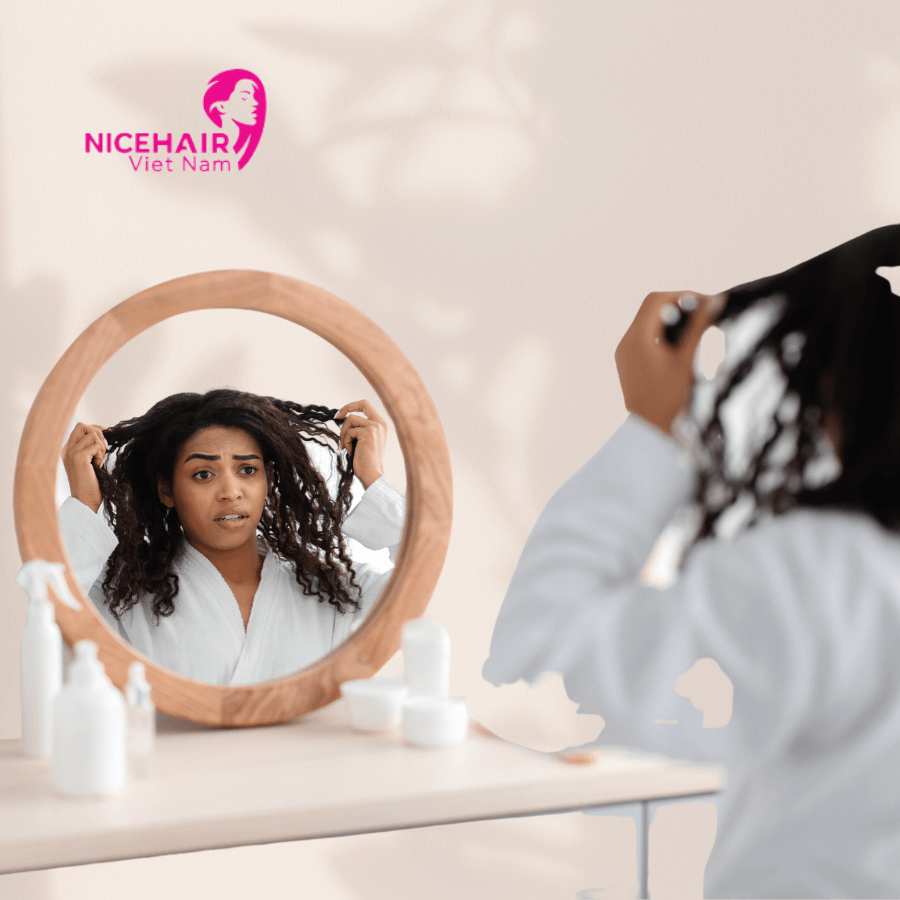
It is crucial to care for hair extensions properly to prevent matting and preserve their desired texture, appearance, and longevity. Regularly detangling the hair with gentle techniques, using appropriate hair products, and avoiding excessive heat or friction can help maintain the integrity of the extensions and prevent them from becoming matted. By following proper maintenance practices, you can ensure that your hair extensions remain smooth, tangle-free, and visually appealing.
What leads to matted hair?
To effectively address the issue of matted hair, it is essential to comprehend its underlying causes. By identifying these factors, you can take preventive measures to avoid its recurrence.
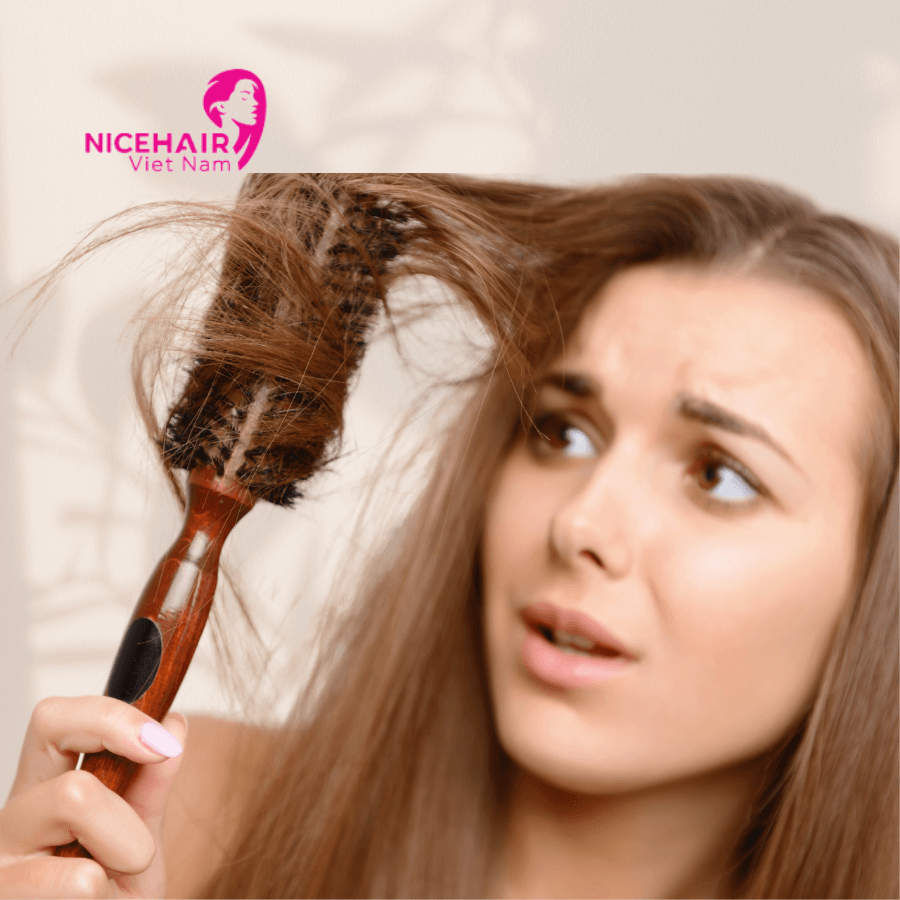
Fine, Fragile Hair
Individuals with thin hair are at a higher risk of experiencing matted hair due to the unique characteristics of their hair strands. Thin hair tends to be more delicate and brittle, making it prone to breakage. When the hair strands break, they become shorter and more susceptible to tangling and knot formation. These knots can then intertwine with neighboring hair strands, resulting in mats.
Regular combing and brushing are essential for individuals with thin hair to prevent matting. Failure to comb or brush the hair regularly allows tangles to accumulate, leading to the formation of mats over time. Additionally, factors such as excessive friction, rough handling, or improper hair care practices can contribute to matting in thin hair.
It’s important to note that thin hair is not the sole factor that causes matting. Other aspects, such as the hair’s natural texture, length, and overall health, can also influence the likelihood of matting. Proper hair care, including gentle detangling techniques, using suitable hair products, and avoiding harsh treatments or styles, can help minimize the risk of matted hair in individuals with thin, brittle strands.
Naturally Curly Hair
Naturally curly hair possesses inherent characteristics that make it more susceptible to matting compared to other hair types. The unique structure of curly hair strands, with their natural coils and spirals, creates more opportunities for them to interlock and entangle. Without proper care and regular combing, knots can form quickly, leading to the development of mats.
The natural curl pattern of the hair tends to cause the strands to wrap around each other, increasing the likelihood of tangling. Factors such as excessive friction from pillowcases or clothing, exposure to wind or humidity, and inadequate moisture and hair care practices can further exacerbate the potential for matting in curly hair. Additionally, the more pronounced the curl pattern, the more prone the hair is to tangling and matting.
To prevent matting in naturally curly hair, it is crucial to establish a consistent and effective hair care routine. This includes gentle and regular detangling using a wide-toothed comb or fingers, starting from the ends and working upward to minimize breakage and tangles. Using moisturizing and detangling products specifically formulated for curly hair can help reduce friction and make combing or brushing more manageable.
Protective styling techniques, such as braids or twists, can also help minimize tangling and matting by keeping the hair strands contained and reducing friction with external elements. Additionally, maintaining proper hydration and moisture balance through deep conditioning treatments, leave-in conditioners, and regular use of oils or serums can help enhance the manageability and resilience of curly hair, reducing the chances of matting.
By adopting these preventive measures and incorporating suitable hair care practices, individuals with naturally curly hair can significantly reduce the occurrence of matting and maintain the health, vibrancy, and definition of their curls.
Long Hair
Individuals with long hair are more prone to experiencing matting due to the nature of their lengthy strands. The increased length provides more opportunity for the hair to become entangled and intertwined, especially when left uncombed or neglected for an extended period. As the hair strands move and interact with one another, they can easily become tangled and attached, leading to the formation of knots and mats.
The weight and movement of long hair contribute to the likelihood of matting. Activities such as wind exposure, physical exercise, or simply wearing loose hair can cause the strands to intertwine and become tangled. Additionally, factors such as friction from clothing, accessories, or contact with rough surfaces can exacerbate the tangling and matting of long hair.
To prevent matting in long hair, it is crucial to establish a regular and thorough hair care routine. This routine should include gentle detangling and proper maintenance. Regularly combing or brushing the hair, starting from the ends and working upward, helps to prevent tangles from forming and allows for easier detangling. Using a wide-toothed comb or a detangling brush specifically designed for long hair can help minimize breakage while effectively separating and smoothing out the strands.
Furthermore, adopting protective hairstyles that keep the hair contained, such as braids, buns, or updos, can significantly reduce tangling and matting. These hairstyles minimize the movement and friction that can lead to knot formation. Additionally, incorporating proper hair care practices such as using moisturizing products, avoiding excessive heat styling, and protecting the hair during sleep with a satin or silk pillowcase or a hair bonnet can contribute to the prevention of matting in long hair.
Regular trims to remove split ends and keep the hair’s health and integrity intact are also beneficial in preventing matting. By maintaining a consistent hair care routine and paying attention to detangling and maintenance, individuals with long hair can minimize the risk of matting, ensuring their hair remains smooth, manageable, and visually appealing.
View more: What is mink hair? Revealing the truth you should know about mink hair weave
Processed Hair
Hair that has undergone extensive processing, such as dyeing, chemical treatments, or heat styling, is more susceptible to dryness, brittleness, and damage, which can increase the likelihood of matting. These processes can strip the hair of its natural oils and moisture, leaving it more prone to tangling and knot formation.
To prevent matting in processed hair, it is crucial to prioritize proper conditioning and hydration. Regularly using moisturizing and nourishing hair products, such as deep conditioners, hair masks, and leave-in treatments, can help replenish lost moisture, restore the hair’s vitality, and reduce dryness and brittleness. These products provide essential nutrients and hydration to the hair shaft, making it more resistant to tangling and matting.
However, finding the right balance in conditioning processed hair is essential. Over-conditioning can lead to excessive oiliness, making the hair limp and prone to tangling. It is important to choose products specifically formulated for processed hair and to follow the recommended usage instructions.
Gentle handling of processed hair is another key aspect of preventing matting. When detangling, it is best to use a wide-toothed comb or a detangling brush to minimize breakage and tension. Starting from the ends and working upward in small sections can help gradually remove tangles and knots without causing further damage.
Regular trims to remove split ends are important for processed hair as well. Split ends not only make the hair appear frizzy and damaged but also contribute to tangling and matting. By regularly trimming the ends, the overall health and manageability of processed hair can be improved, reducing the chances of matting.
Protective hairstyles that minimize friction and manipulation, such as braids, buns, or updos, can also help prevent matting in processed hair. These hairstyles keep the strands contained and reduce the chances of them tangling or rubbing against clothing or accessories.
By incorporating these practices into a comprehensive hair care routine, individuals with processed hair can minimize the risk of matting, maintain the hair’s integrity, and enjoy healthy, manageable locks. Regular conditioning, gentle handling, and consistent trims are key to preventing matting and preserving the beauty and health of processed hair.
How to Prevent Hair Tangling?
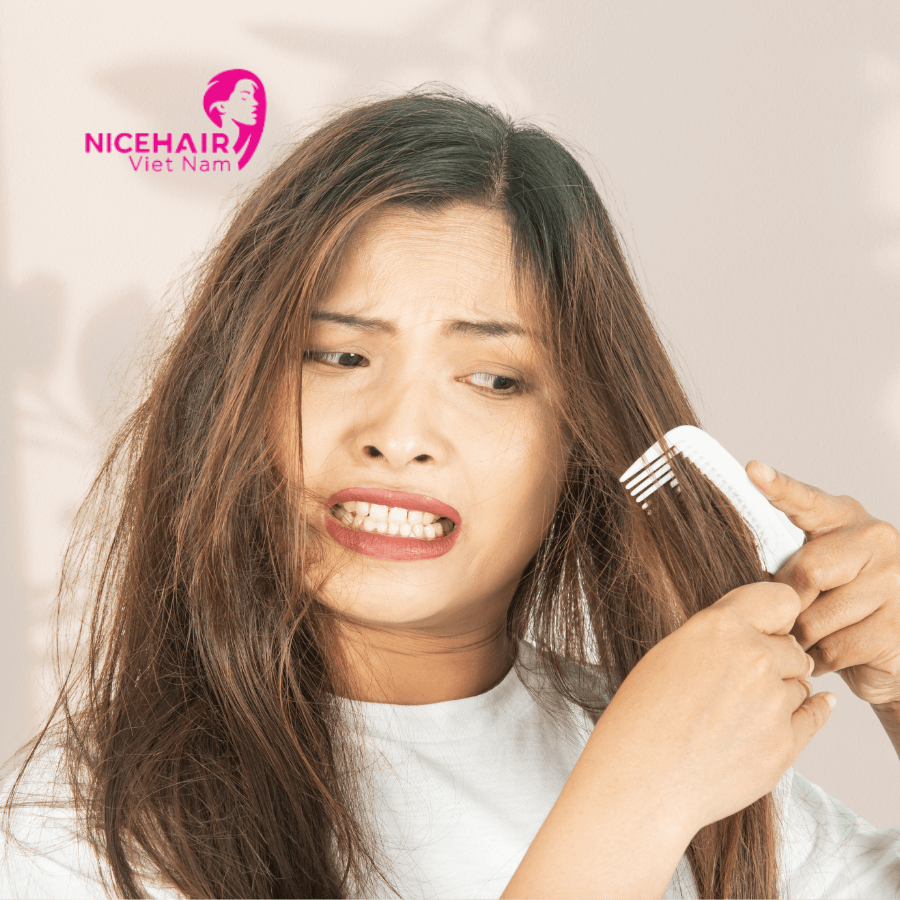
Whether you’re dealing with matted hair or want to avoid hair extensions from matting at the root, taking preventive measures can help you manage and prevent tangling. Untangling matted hair requires a gentle approach to avoid damaging the strands. Here are some in-depth tips and techniques to help you effectively untangle matted hair and prevent future tangling:
- Start with Conditioning: Before attempting to untangle matted hair, apply a generous amount of conditioner to the hair. This helps soften the strands, adds moisture, and provides slip, making it easier to separate the tangled sections. Leave the conditioner on for a few minutes to allow it to penetrate the hair.
- Divide and Conquer: Divide the matted hair into smaller, more manageable sections. This allows you to focus on one knot at a time, reducing the risk of further tangling and making the untangling process more effective.
- Use a Wide-Toothed Comb or Detangling Brush: Begin by gently working through the tangles using a wide-toothed comb or a detangling brush. Start from the ends of the hair and work your way up, gradually detangling small sections at a time. If the hair is severely matted, start at the very ends and work closer to the scalp as the tangles loosen.
- Finger Detangling: In addition to using a comb or brush, incorporating finger detangling can be beneficial, especially for textured or curly hair. Use your fingers to carefully separate the strands, working through the tangles, and gently loosening any knots.
- Apply a Detangling Spray: If the hair is particularly stubborn or resistant to untangling, consider using a detangling spray. These sprays are specifically designed to ease the untangling process by providing additional slip and reducing friction.
- Avoid Excessive Force: When untangling matted hair, it’s important to be patient and avoid pulling or yanking on the hair. Applying excessive force can lead to breakage and further damage. Take your time, work through the knots gently, and avoid any aggressive pulling.
- Regular Maintenance and Preventive Care: To prevent future tangling, incorporate regular maintenance and preventive care into your hair care routine. This includes regular detangling, using a wide-toothed comb or brush to prevent knots from forming, and avoiding excessive heat styling or friction that can contribute to tangling.
- Protective Hairstyles: Opt for protective hairstyles, such as braids, buns, or twists, which can help minimize tangles and reduce friction between strands. These hairstyles keep the hair contained and protected, decreasing the chances of tangling and matting.
- Satin or Silk Pillowcases: Sleeping on a satin or silk pillowcase reduces friction and minimizes tangles. The smooth surface of these pillowcases allows the hair to glide more easily, preventing it from becoming tangled during sleep.
By following these comprehensive tips and techniques, you can effectively untangle matted hair and implement preventive measures to minimize future tangling. Consistent and gentle care, along with proper maintenance, is key to keeping your hair healthy, manageable, and tangle-free.
How to untangle matted hair?
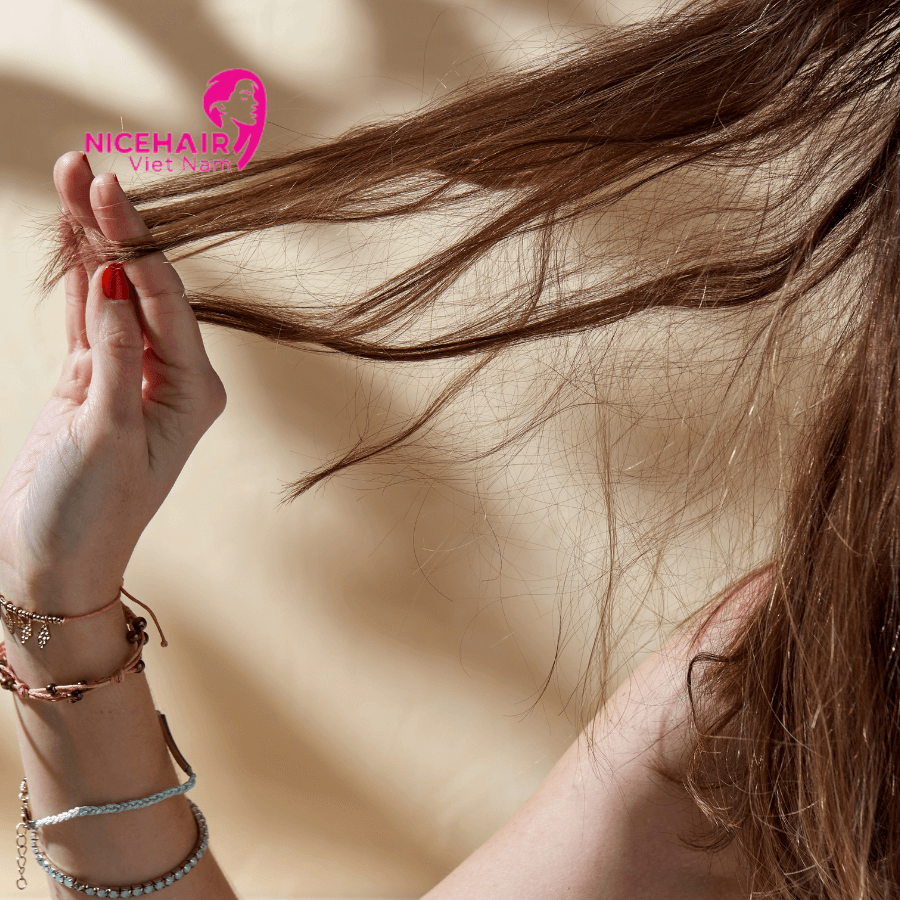
When faced with matted hair and seeking solutions for how to untangle it, it’s crucial to take immediate action to prevent further frizz and breakage. Follow these simple steps to effectively untangle matted hair:
- Apply a Detangling Spray or Conditioner: To ease the detangling process, apply a detangling spray or conditioner to the matted hair. This helps hydrate and moisturize the hair, making it more manageable and easier to untangle. Ensure the spray or conditioner is evenly distributed, including the surrounding areas of the mat, to prevent further tangling.
- Allow the Product to Penetrate: Leave the conditioner or spray on the hair for at least 30 minutes. This gives the product enough time to moisturize and soften the hair, making the detangling process smoother and faster.
- Use an Untangling Comb or Brush: Opt for a wide-toothed comb or an untangling brush to gently work through the hair. These tools help separate the strands without causing excessive pulling or breakage. Start at the top of the mat and work your way down, taking care to be gentle and patient.
- Utilize Your Fingers: Your fingers can be highly effective in isolating individual hair strands without causing damage. Begin at the top of the mat and carefully work your fingers through the tangles, untangling them from the root to the ends. This method allows for precise control and minimizes the risk of further tangling.
- Prevent Future Tangling: Once you have removed some hair from the mat, use the untangling brush to gently comb through the remaining matted hair. Take care to ensure the strands do not become entangled with each other during the untangling process.
- Incorporate a Wide-Toothed Comb: “How to comb out matted hair” is a vital step in untangling matted hair. Employ a wide-toothed comb to detangle any narrower strands that may still be tangled even after removing most of the hair from the mat. Ensure that all strands are thoroughly untangled.
- Rinse with Conditioner: After untangling, rinse the hair with cool water and apply conditioner. This helps moisturize the strands, preventing them from matting again and promoting smoothness.
By following these steps and using gentle techniques, you can effectively untangle matted hair without causing further damage. Remember to take preventive measures, such as regular conditioning, proper maintenance, and avoiding activities that contribute to tangling, to keep your hair healthy, manageable, and tangle-free.
Summary
Dealing with matted hair can be a frustrating and time-consuming task, but there are effective ways to detangle and prevent it. This comprehensive article provides valuable insights, practical techniques, and preventive measures to help individuals manage tangled hair and maintain healthy, tangle-free locks.
The article emphasizes the importance of establishing a proper hair care routine as the foundation for preventing and managing matted hair. This includes regular combing or brushing to prevent knots from forming and to keep the hair strands smooth and untangled. Additionally, using suitable hair products, such as detangling sprays or conditioners, can provide the necessary moisture and slip to facilitate the detangling process.
When it comes to detangling matted hair, gentle techniques are key to avoid causing damage or breakage. The article suggests starting from the ends of the hair and working upward, using a wide-toothed comb, fingers, or a detangling brush to slowly and carefully separate the knots. It emphasizes the importance of patience and taking the time to work through the tangles without rushing the process.
In addition to effective detangling techniques, the article provides preventive measures to minimize the occurrence of matted hair. This includes protecting the hair while sleeping by using silk or satin pillowcases to reduce friction, avoiding excessive heat styling that can lead to dryness and tangling, and keeping the hair well-moisturized and hydrated through regular conditioning.
Furthermore, the article highlights the significance of regular trims to prevent split ends, which can contribute to tangling, and suggests opting for hairstyles that minimize friction and tangling, such as braids or buns. By incorporating these preventive measures into their hair care routine, individuals can reduce the likelihood of experiencing matted hair.
By following the techniques and implementing the preventive measures outlined in this article, individuals can effectively manage matted hair and maintain healthy, tangle-free locks. With patience, consistency, and proper care, individuals can enjoy smoother, more manageable hair and eliminate the frustrations associated with tangled locks.

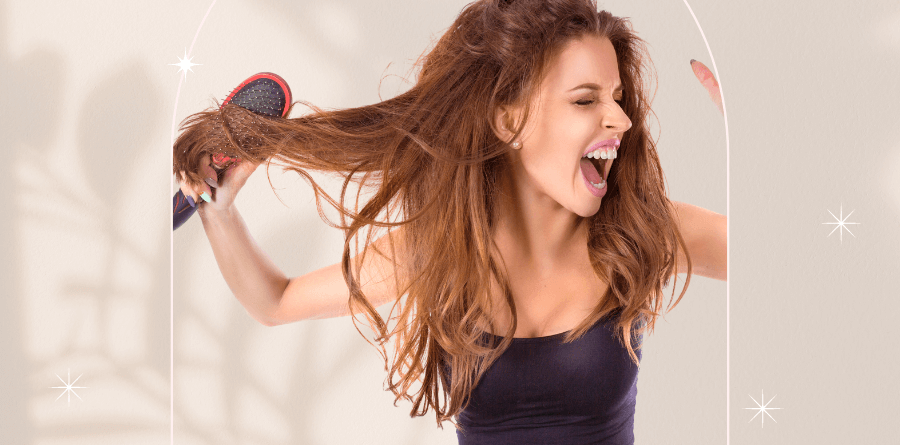
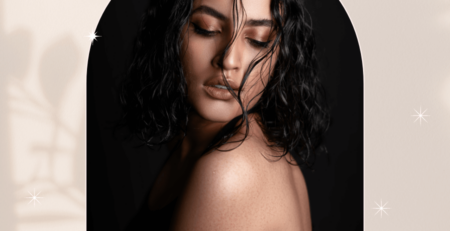

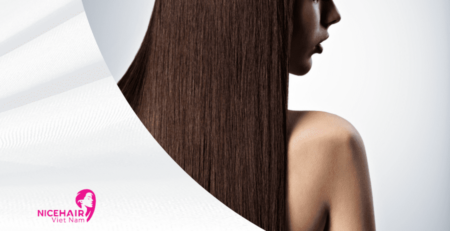
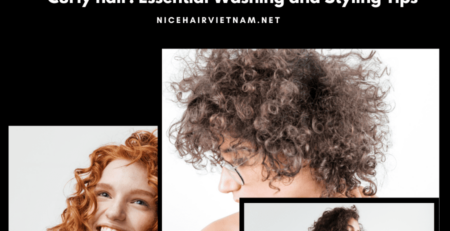
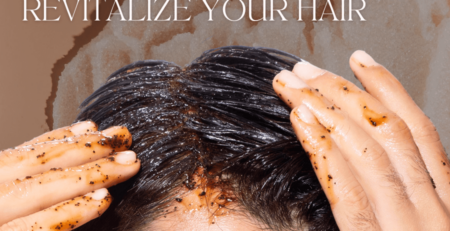
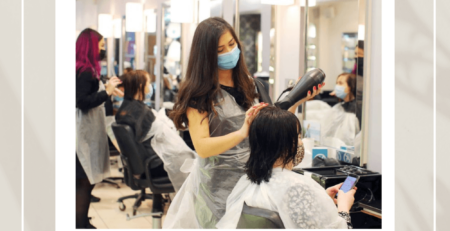
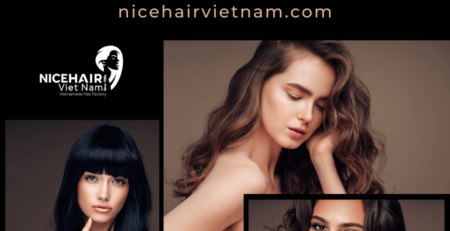
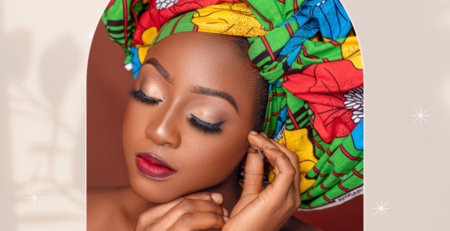
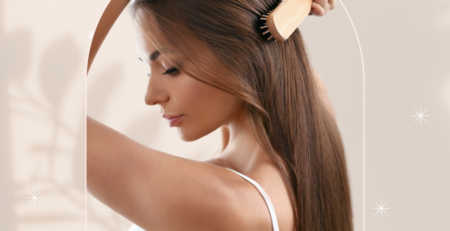

Leave a Reply